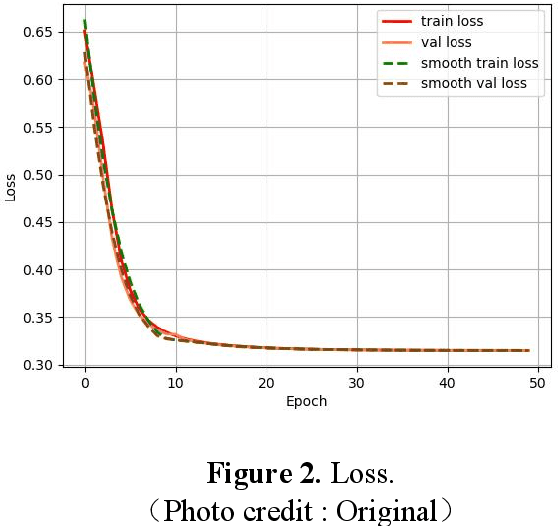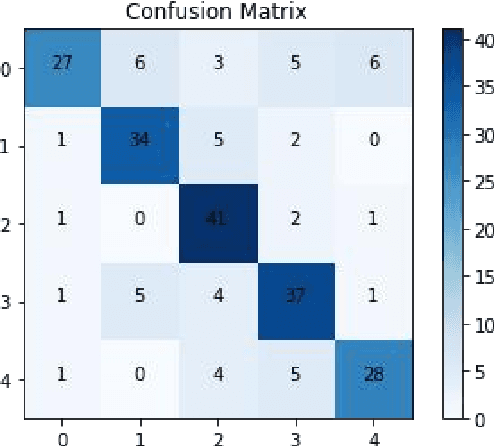Improved AdaBoost for Virtual Reality Experience Prediction Based on Long Short-Term Memory Network
Paper and Code
May 17, 2024



A classification prediction algorithm based on Long Short-Term Memory Network (LSTM) improved AdaBoost is used to predict virtual reality (VR) user experience. The dataset is randomly divided into training and test sets in the ratio of 7:3.During the training process, the model's loss value decreases from 0.65 to 0.31, which shows that the model gradually reduces the discrepancy between the prediction results and the actual labels, and improves the accuracy and generalisation ability.The final loss value of 0.31 indicates that the model fits the training data well, and is able to make predictions and classifications more accurately. The confusion matrix for the training set shows a total of 177 correct predictions and 52 incorrect predictions, with an accuracy of 77%, precision of 88%, recall of 77% and f1 score of 82%. The confusion matrix for the test set shows a total of 167 correct and 53 incorrect predictions with 75% accuracy, 87% precision, 57% recall and 69% f1 score. In summary, the classification prediction algorithm based on LSTM with improved AdaBoost shows good prediction ability for virtual reality user experience. This study is of great significance to enhance the application of virtual reality technology in user experience. By combining LSTM and AdaBoost algorithms, significant progress has been made in user experience prediction, which not only improves the accuracy and generalisation ability of the model, but also provides useful insights for related research in the field of virtual reality. This approach can help developers better understand user requirements, optimise virtual reality product design, and enhance user satisfaction, promoting the wide application of virtual reality technology in various fields.
 Add to Chrome
Add to Chrome Add to Firefox
Add to Firefox Add to Edge
Add to Edge